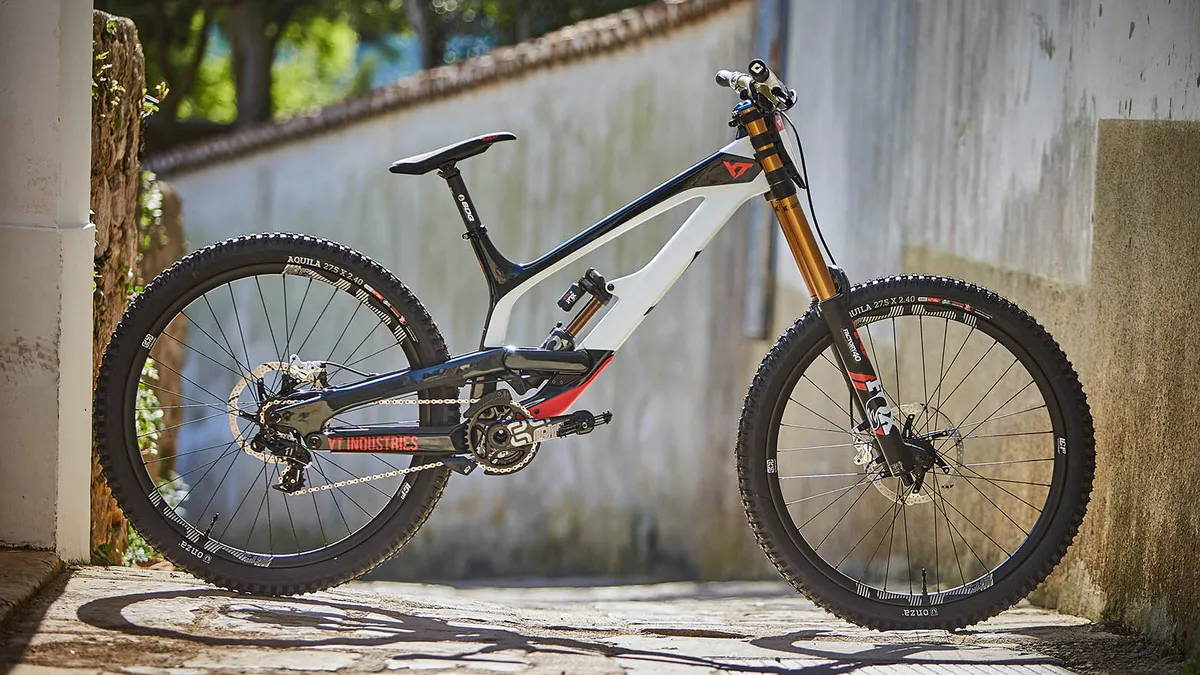With the first round of the UCI World Cup done and dusted, YT must have been chuffed - their latest Tues Downhill bike took the podium under Aaron Gwin just days before its official launch. Our man Rob Weaver tackled the gnarly Lošinj track to get the low-down on the new YT Tues.
It is fair to say the YT Tues has had more than its fair share of success over the years, having clinched numerous accolades amongst the cycling media along with topping the leader board at the most formidable mountain bike event that exists, the Redbull Rampage, under the guidance of Andreu Lacondeguy.
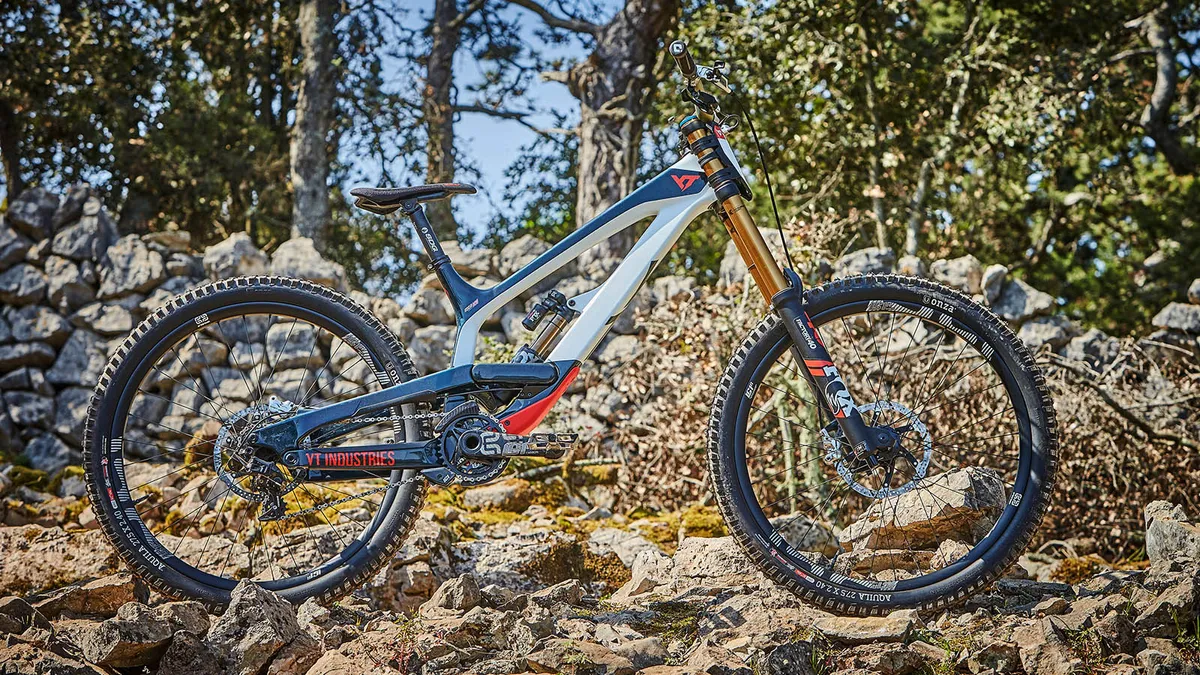
But what better proving ground for a bike designed to go downhill as fast as possible than the World Cup Downhill circuit. Having signed the impressive American, Aaron Gwin at the start of 2016, things got off to a flier aboard his new bike where he won the opening round in Lourdes, France. Aaron went on to win the overall title that year, and then clinch it again in 2017, helping secure his position as one of the most successful downhill racers ever, as well as underlining just how capable the Tues really is.
Gwin was keen to make some changes to the bike for 2018 and make it even quicker. Judging by his performance at the Croatian round in Lošinj this past weekend, it would seem some of these changes could well be paying off already.
Form and function
Possibly the biggest shock for many of us will be that YT didn't build the new Tues around bigger 29in wheels, well, not yet at least. Though Gwin has always said how much he likes 29er trail bikes, it seems the Tues wagon wheeler just isn't quite ready to get between the tapes. Judging by what the YT guys and Aaron himself were saying though, it isn't too far away.
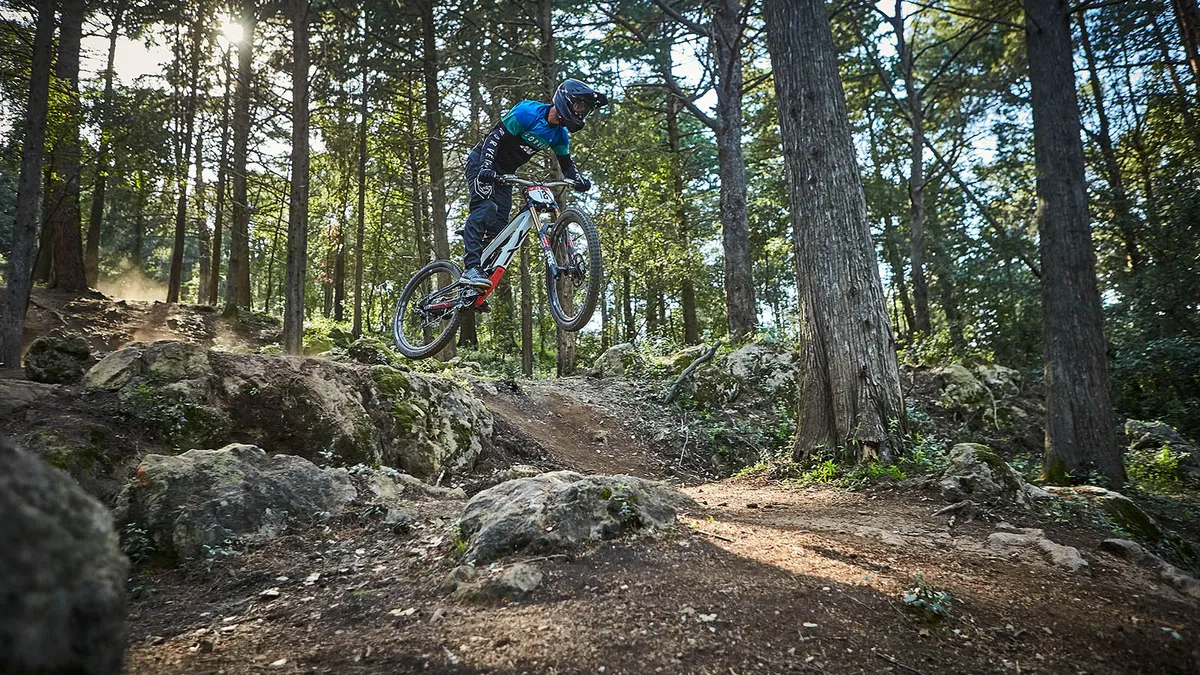
Regardless, the new bike designed around 650b wheels is certainly no slouch on the race track, especially when you consider that this particular track is jam packed full of square limestone edges ready to decimate tyres, wheels and momentum, given half a chance. Of the five men on the podium last Sunday in Loöinj, Gwin's was the only bike on the smaller wheels.
The new Tues comes in five sizes, ranging from the small which offers a reach of 410mm, to the XXL with a reach of 495mm.
Unlike the last Tues, the headtube length of each frame now differs between sizes while the chainstay length increases by 5mm on the XL and XXL frames, taking it to 440mm in a bid to better distribute rider weight between the wheels. Both of these points came courtesy of their number one rider, Gwin, along with a request for a little more reach, which the XL (Gwin's bike size of choice) gets 4mm more of over its 2017 counterpart.
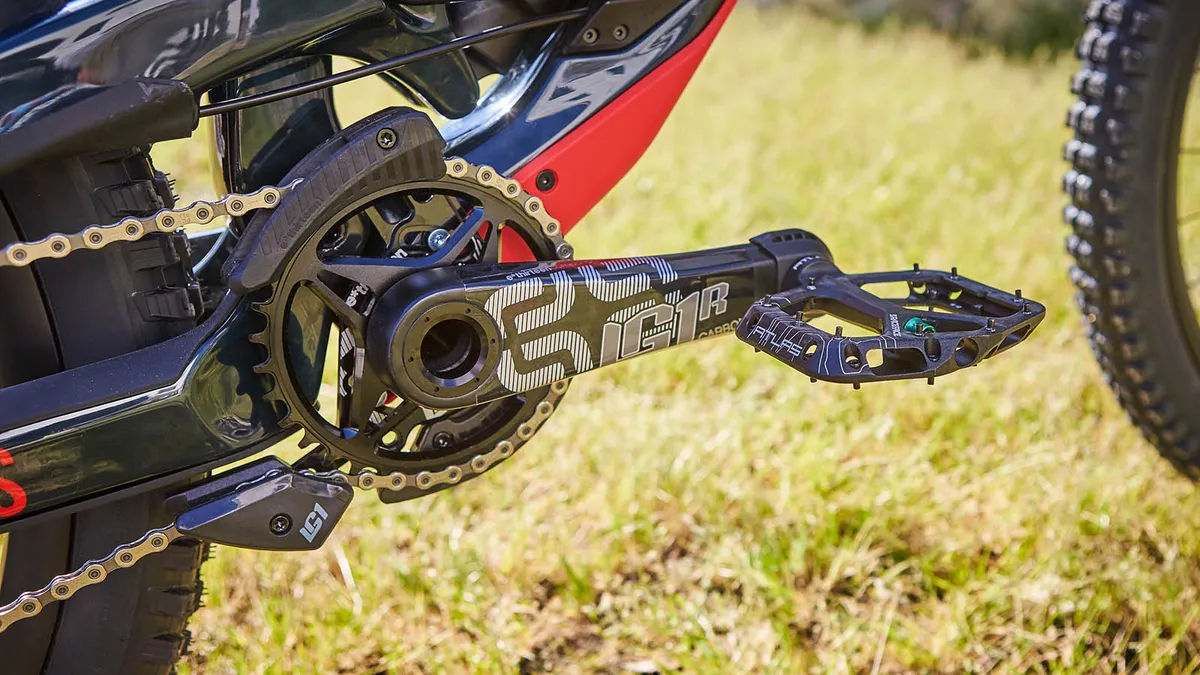
The new frame also gets a totally revised head tube that'll accept a reach adjust headset, as used by Aaron to reduce the reach of the XL frame slightly.
In terms of weight savings, YT say there's a 300g saving in the back end with the use of a full carbon rear end.
Subtle but significant
Like many other bike brands out there, when YT redesigned the Tues, they wanted to make some changes to the rear suspension, with some of the usual goals in mind; make the initial stroke more sensitive for more traction and comfort, and increase the mid-stroke support to improve how the bike feels through turns or when loading and pumping the terrain.
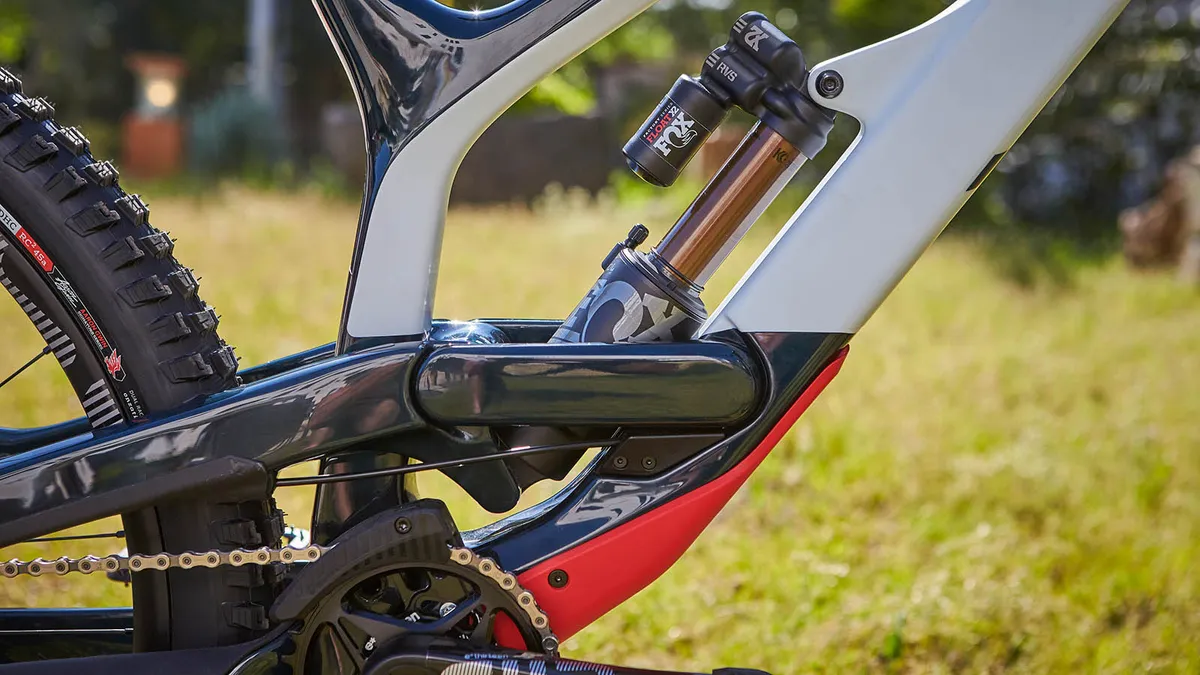
According to YT, both of these targets have been achieved. "If you compare the old Tues to the new one, you can feel directly a sensitivity difference. Just at the beginning, it's got nearly no friction at the beginning", explained Stefan Willared, YT's Chief Technical Officer.
As for the mid-stroke support, this came about more because of what Gwin was asking, as Stefan explains, "Aaron was riding the bike and told us, that maybe the bottom bracket height is a bit too low. His suggestion was, could we do the BB higher? What did we say? No."
"The point is, he wants to have under the riding condition the mid-stroke feeling a little bit higher. That's why we decide to come from the mid-stroke point, the curve is higher than the old curve, so it means the whole kinematic sits a little bit higher. The force is higher."
But it's at this point when you tend to hear the 'add more progression to the end stroke to prevent bottom-out' line rolled out, though it's not the case when it comes to the Tues. In fact, the German brand decided to reduce the progression as the bike begins to reach the latter stages of its travel in a bid to make things feel that bit smoother when tackling really big impacts.
"We decreased the end progressivity by five percent. And we came from a higher mid-stroke and decreased the end progressivity so the whole bike goes from the mid-stroke a bit smoother into the end stroke", say Willared.
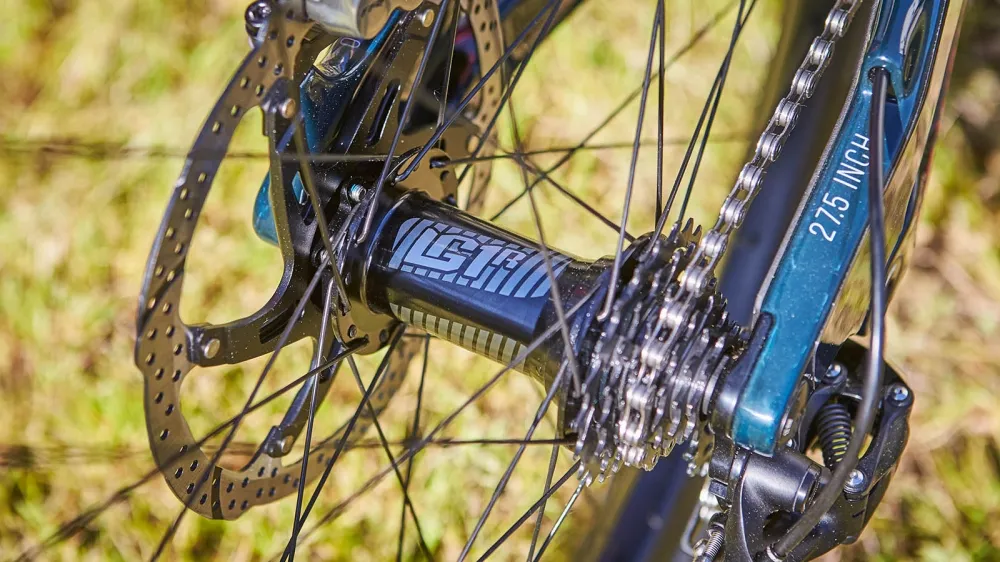
As the Fox Float X2 shocks come with two volume spacers as standard on the new Tues, it's still possible to recreate the same end stroke feeling of the old bike by simply adding spacers to the shock. Equally, if you're looking for a plusher ride, they can be removed.
YT also wanted to alter how the Tues rear suspension behaved under braking and improve rider stability on the bike when tackling really steep sections of trail. To do this, YT increased the amount of anti-rise the Tues has over the 2017 version by 15 percent.
Generally speaking, more anti-rise is thought to make the suspension feel less active and firmer when braking, though it will also help the suspension to sit into its travel, helping to pitch rider weight rearwards therefore increasing rider stability when riding steeper trails.
While you could argue that a pro rider will feel this less due to the way in which they apply the brakes, riders at the more average end of the scale who drag brakes a lot more when the going gets tricky need every bit of help they can get. YT believe they've balanced compromise well and have increased overall stability without detrimentally affecting suspension performance in those key situations.
Details matter
Take a look at the driveside of the Tues and there's very little in the way of pivot on show. That's because all (with the exception of the chainstay pivots) hardware is accessed from the non-driveside. This came as a request directly from the YT MOB mechanics in a bid to make their lives that bit easier when working on the bikes. It also looks pretty slick too.
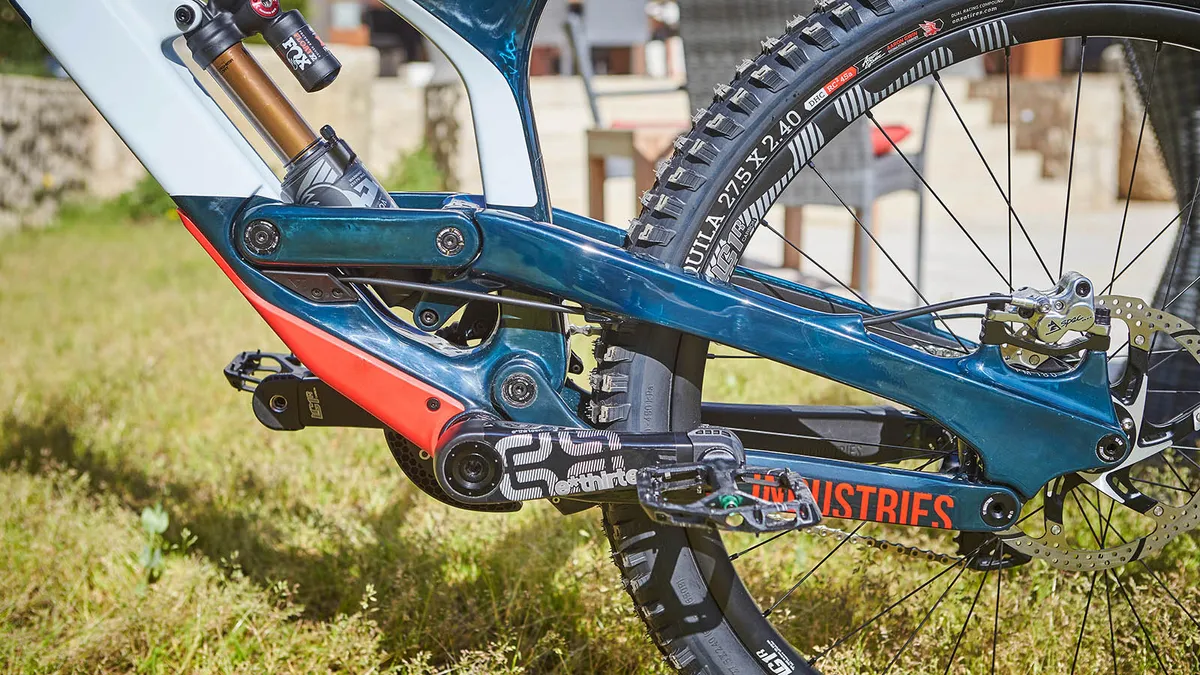
All pivots move on full-complement bearings (bearings that don't use a retainer, making room for additional balls to be fitted) to keep things running smoothly and, according Willared, "Depending on the dimension of the bearing, you could put up to one up to two rolling elements more into the bearing, that means you have a higher static capacity which allows you to reduce the dimension of the bearing. This is an aspect for designing because around a bearing you need a certain wall-thickness, and its bigger in carbon than it is in alloy". High-stress pivots get double row bearings to help handle the higher demands on them but remain compact in size.
Together with Acros, a new lip seal (similar in looks to that found in a headset or on a bottom bracket) has been added to all pivots/bearings, wrapping around the bearings outer ring. This improved sealing should help increase bearing life in the long run.
YT have also developed new bracing axles which are threaded in and tightened from one side of the pivot. A conical end cap and bolt is then screwed into the end of the axle which makes it expand, fixing it securely in place.
All cables and hoses are routed internally and, at the head tube, in such a way that they'll not make fixing a number board on a real headache. Neatly finished cable clamps are bolted in place to ensure things remain rattle free and looking slick. Internal channels should help when it comes to re-threaded cables through the frame.
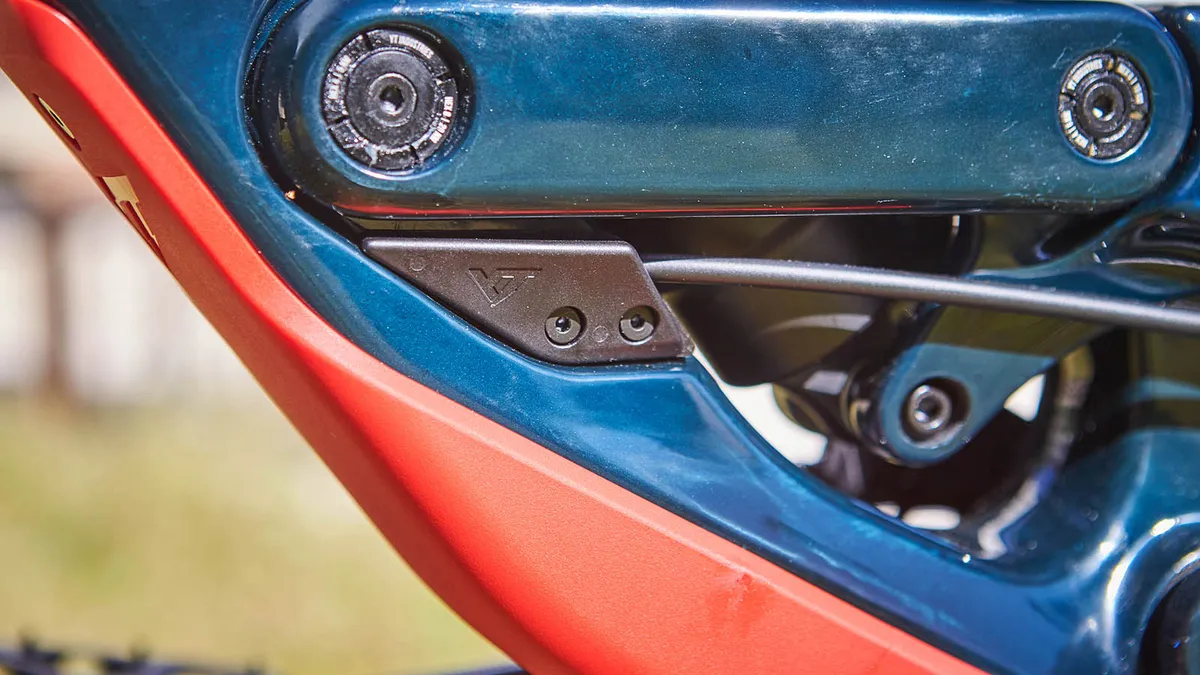
In potential noise hotspots, YT have added some integrated rubberised protection on the chain and seat stays to keep things quiet, as well as adding a neat little chainsuck protection around the mech hanger. The belly of the Tues also gets properly protected thanks to the hefty polyamide (PA66) protector which is bolted in place and covers the lower half of the downtube and bottom bracket shell.
The rear axle is a custom X-12, Poka-yoke (inadvertent error prevention) number. It remains at 150x12mm.
In terms of aesthetics, it's the little touches that make the Tues such a looker. The shock runs parallel with the downtube where it nestles into a pre-shaped nook on the top of the downtube. YT say it's also helped them to lower the bikes centre of mass, albeit very slightly.
Tyre clearance has also been improved to give riders from damper countries a little extra mud room should the weather take a turn for the worse.
Ride impressions
I'll be honest, the Lošinj World Cup track features some of the most jagged, terrifying sections I've ever attempted to ride down, and certainly not the best place to get the measure of a new bike. The unforgiving, unrelenting limestone dishes out square edge after square edge, each one trying to knock you off line. The only real respite was in the few patches of gravel-like dirt where traction was seriously lacking.
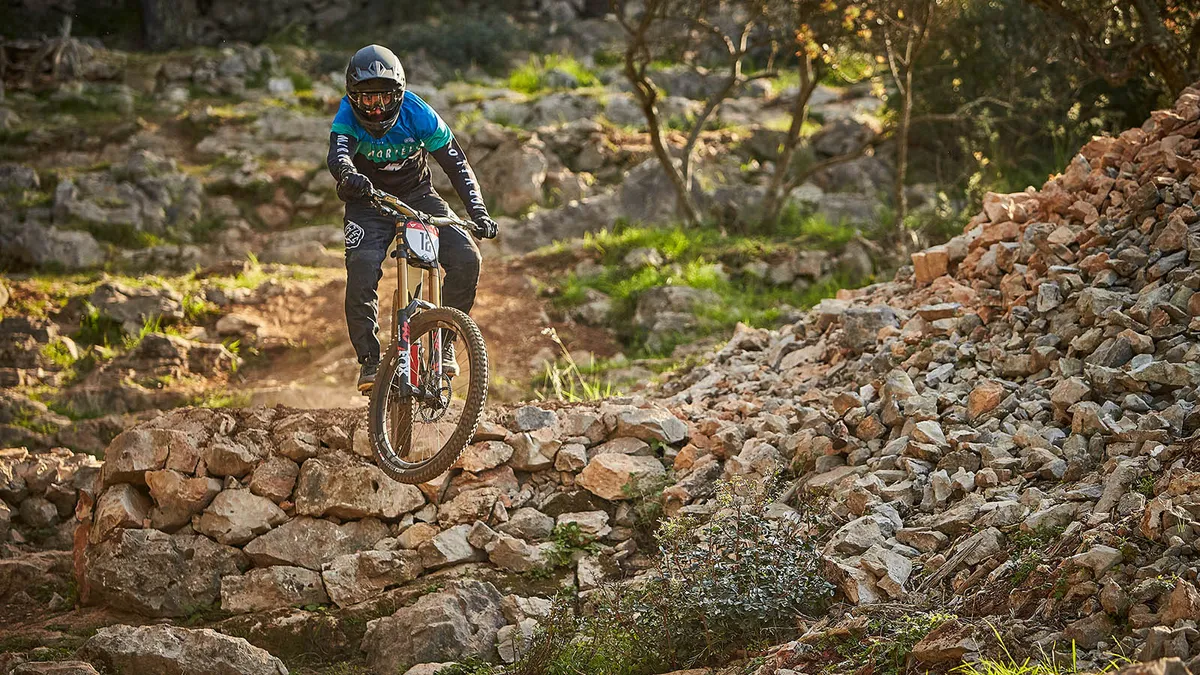
After a couple of runs, my confidence was slowing starting to build and on the rare occasions I could let things go a little, I did start to feel a slight imbalance in the suspension. This left the front end feeling light as the back end sank deeper into its travel. It also meant for some pretty hefty bottoming out at the rear on certain drops.
Dropping the forks spring pressure down by just a few psi and adding a single volume spacer to the Float X2 rear shock seemed to properly remedy this though, giving me a much more neutral and stable position on the bike where I could let it just get to work with the ugliness that lay beneath the tyres. And it's fair to say that the Tues did this with masses of composure when you consider just how savage the surface I was riding on was.
The Fox 40 fork up front never felt harsh or gave up its travel too easily, and I was surprised with just how well the back of the bike sucked up the really big square edges. Due to the polished surfaces in some section and the brutal frequency of the edges in others, this was seriously important as staying on the same line run after run was almost impossible.
In terms of the other components featured on the CF Pro Race, the wheels are certainly worth a mention. Despite a number of clangs and bangs, both rims remained problem free and unmarked. Gwin's signature tyres are another highlight, with predictable grip and an impressive ability to stave off punctures.
While I like the shape and feel of the TRP levers, the action of the brakes themselves wasn't totally my cup of tea. Pull the levers and the power seems to build then really hit hard. It's just something that needs getting used to. That said, I had zero issues with brake fade or pumping which is impressive considering how much you're on the brakes on that track.
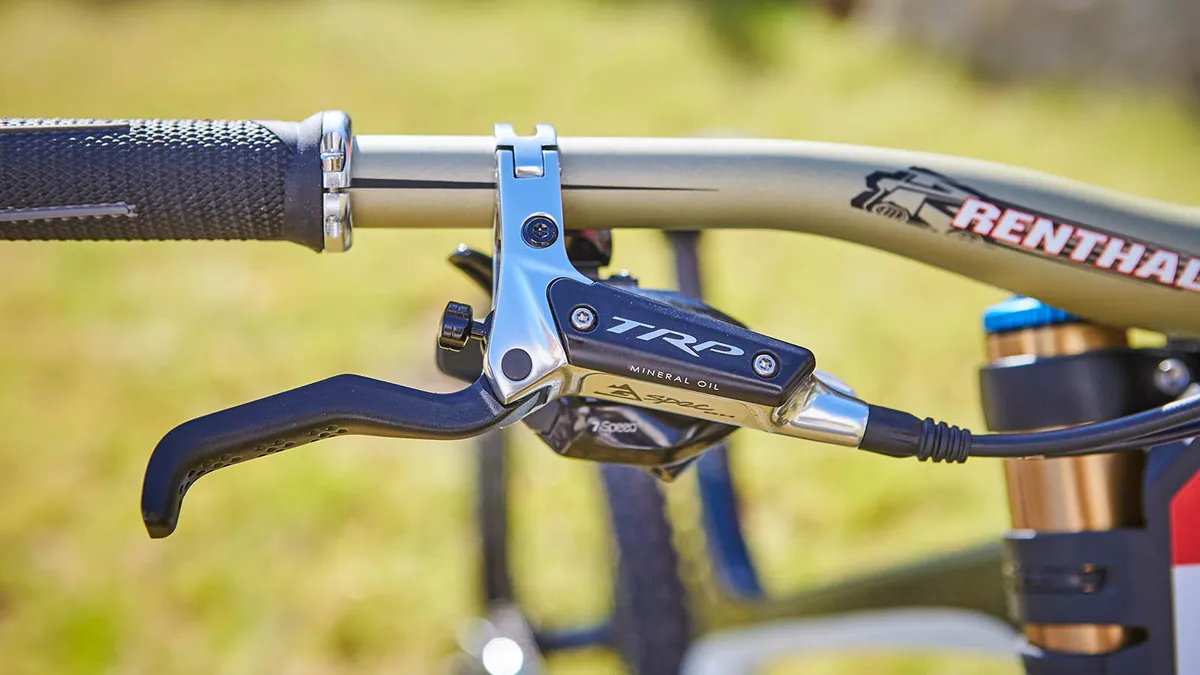
Of course, with the track throwing up so many issues, it was never going to be easy judging a bike that I'd never ridden before on it, especially when you consider we only had a day and a half of riding.
While the new Tues can clearly handle plenty of abuse, I fully intend on getting one onto my home tracks in order for me to properly get the measure of the bike in the not too distant future.
Range and pricing at a glance
YT Tues CF Pro Race MOB Edition (as seen here)
- Price: £4999 / €5499 / $5499
YT Tues CF Pro Race
- Price: £4999 / €5499 / $5499
This model features the same frame and spec as the MOB Edition bike though doesn't get the same paint job as the race team though the weight is claimed to be identical.
YT Tues CF Pro
- Price: £3599 / €3999 / $3999
While both fork and shock come from Fox, the CF Pro uses the Performance Elite rather than Factory models. Race Face supply the bar (alloy) and stem while alloy e*thirteen rims are wrapped in Onza Aquila 2.4in rubber. The brakes are TRP's Quadiem rather than the G-Spec DH offerings. The frame is full carbon throughout.
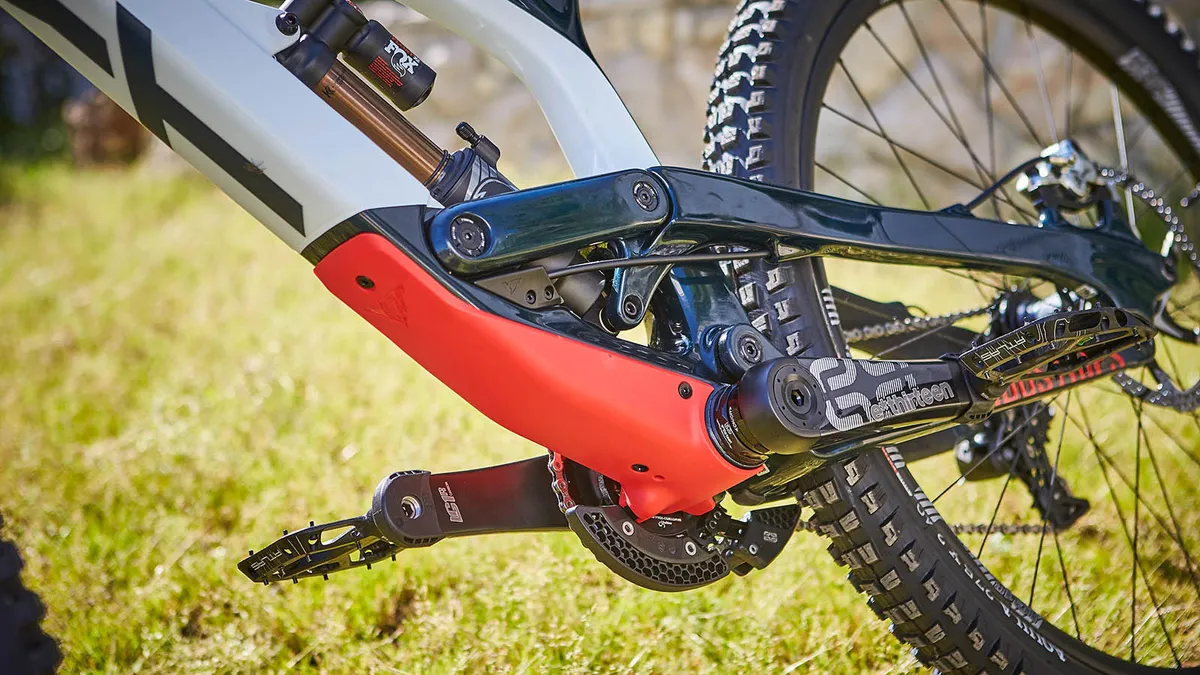
Specifications
- Frame: carbon, with 200mm of travel
- Fork: Fox 40 Float Factory FIT RC2, with 203mm of travel
- Shock: Fox Float Factory X2
- Drivetrain: e*thirteen LG1 carbon crankset, 34T ring, e*thirteen LG1+ chainguide
- Mech: SRAM X01 DH
- Shifter: SRAM X01
- Cassette: e*thirteen 7-speed 9-21T cassette
- Wheelset: e*thirteen LG1r carbon
- Tyres: Onza Aquila RC2 AG 27.5x2.4in tyres
- Brakes: TRP G-Spec DH (203mm rotors)
- Bar: Renthal Fatbar Carbon 25, 800mm
- Stem: Renthal Integra 35, 50mm
- Seatpost: SDG I-Beam carbon
- Saddle: SDG I-Fly 2.0
- Weight: 15.2kg (claimed, size small without pedals)
- Stack: 605mm
- Reach: 429mm
- Wheelbase: 1220mm
- Head Angle: 63.5-degrees
- Seat Angle: 73.5-degrees

